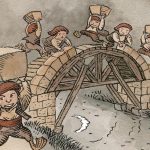 Alan King continues to share some great stories. He has two new Basque stories on his website. Kidnapped by the Basajaun tells the story of a shepherd frees a young woman who had been kidnapped by a basajaun and forced to live with him. The Dog with Charcoal Eyes is about a man, about to be wed, and a dog who wishes to visit a terrible revenge for a wrong done by the man.
Alan King continues to share some great stories. He has two new Basque stories on his website. Kidnapped by the Basajaun tells the story of a shepherd frees a young woman who had been kidnapped by a basajaun and forced to live with him. The Dog with Charcoal Eyes is about a man, about to be wed, and a dog who wishes to visit a terrible revenge for a wrong done by the man.
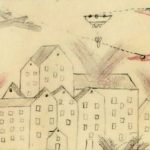 During the Spanish Civil War, as Franco’s forces approached the Basque capitals, the boat Habana took thousands of children to Britain, where they could escape the ravages of the war. Most eventually returned to the Basque Country, though hundreds stayed in Britain, their adopted home. The Yorkshire Post provides some context to the efforts of ordinary British citizens to help these children. BBC provides more details about the ordeal of these children and their experiences in Britain.
During the Spanish Civil War, as Franco’s forces approached the Basque capitals, the boat Habana took thousands of children to Britain, where they could escape the ravages of the war. Most eventually returned to the Basque Country, though hundreds stayed in Britain, their adopted home. The Yorkshire Post provides some context to the efforts of ordinary British citizens to help these children. BBC provides more details about the ordeal of these children and their experiences in Britain.
 Luis Ortiz Alfau was 19 years old when the Spanish Civil War broke out. Through he never fired a shot in the war, he served in the transmissions service, aiding in communications between different battalions. He witnessed the bombing of Gernika and was held in a forced labor camp by Franco’s forces. In this article in the Bangkok Post, Luis, one of the few remaining survivors of Gernika, tells his story.
Luis Ortiz Alfau was 19 years old when the Spanish Civil War broke out. Through he never fired a shot in the war, he served in the transmissions service, aiding in communications between different battalions. He witnessed the bombing of Gernika and was held in a forced labor camp by Franco’s forces. In this article in the Bangkok Post, Luis, one of the few remaining survivors of Gernika, tells his story.
 One of the coolest aspects of Basque culture is the bertsolaritza, or improvisational poetry. Bertsolariak are given a theme and, on the spot, they have to compose a verse that follows a very specific rhythm. There are competitions for the best bertsolariak, with the best composing verses that bring laughs and gasps from the audience. As part of the Smithsonian Folklife Festival that was held in late June and early July, Smithsonian Magazine had an excellent introduction to the world of bertsolaritza. They also have a nice discussion with John Ysursa and Martin Goicoechea about the art form.
One of the coolest aspects of Basque culture is the bertsolaritza, or improvisational poetry. Bertsolariak are given a theme and, on the spot, they have to compose a verse that follows a very specific rhythm. There are competitions for the best bertsolariak, with the best composing verses that bring laughs and gasps from the audience. As part of the Smithsonian Folklife Festival that was held in late June and early July, Smithsonian Magazine had an excellent introduction to the world of bertsolaritza. They also have a nice discussion with John Ysursa and Martin Goicoechea about the art form.
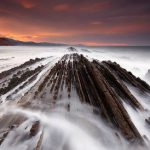 Here is an interesting connection between Santa Fe, New Mexico and the Basque Country. Parts of season 7 of the Game of Thrones, the hit series based on George R. R. Martin’s fantasy novels, will film in the Basque Country, specifically in Zumaia and Bermeo. With landscapes like that, I can see why. This isn’t the first time the series has filmed in Spain nor, more specifically, the Basque Country. The connection to Santa Fe? Martin calls Santa Fe his home.
Here is an interesting connection between Santa Fe, New Mexico and the Basque Country. Parts of season 7 of the Game of Thrones, the hit series based on George R. R. Martin’s fantasy novels, will film in the Basque Country, specifically in Zumaia and Bermeo. With landscapes like that, I can see why. This isn’t the first time the series has filmed in Spain nor, more specifically, the Basque Country. The connection to Santa Fe? Martin calls Santa Fe his home.
 If you are a wine lover, but you are looking for something beyond the typical reds, whites, or even roses, a group in the Basque Country has created a blue wine. I’m not a wine connoisseur (I once shocked my future mother-in-law by pouring coke into the expensive glass of wine she had ordered me…), but it seems that this likely tastes similarly to other wines, but just has a different look. The inventors say they are looking for a little revolution and innovation for the wine market.
If you are a wine lover, but you are looking for something beyond the typical reds, whites, or even roses, a group in the Basque Country has created a blue wine. I’m not a wine connoisseur (I once shocked my future mother-in-law by pouring coke into the expensive glass of wine she had ordered me…), but it seems that this likely tastes similarly to other wines, but just has a different look. The inventors say they are looking for a little revolution and innovation for the wine market.
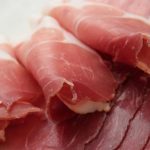 Does ham hold the secret to world peace? I doubt it, given that many societies avoid pork. However, the throng of people at the annual ham fair in Bayonne/Baiona (there is a ham fair? And no one ever told me?) were having such fun, it made writer Anthony Peregrine wonder if it would be worth bring world leaders together at such an event. As his wife told him, I don’t think so, but I do admit that jamon is about the best thing I’ve ever eaten.
Does ham hold the secret to world peace? I doubt it, given that many societies avoid pork. However, the throng of people at the annual ham fair in Bayonne/Baiona (there is a ham fair? And no one ever told me?) were having such fun, it made writer Anthony Peregrine wonder if it would be worth bring world leaders together at such an event. As his wife told him, I don’t think so, but I do admit that jamon is about the best thing I’ve ever eaten.
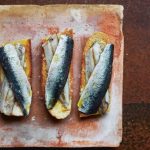 Continuing on the theme of food, José Pizarro has a new cookbook featuring Basque recipes. Though not Basque himself (Pizarro is from Extremadura) he has had a long-held interest in the food of the Basque region. His new book features recipes of pintxos accompanied with wonderful photos. The Telegraph and The Independent have several of these online.
Continuing on the theme of food, José Pizarro has a new cookbook featuring Basque recipes. Though not Basque himself (Pizarro is from Extremadura) he has had a long-held interest in the food of the Basque region. His new book features recipes of pintxos accompanied with wonderful photos. The Telegraph and The Independent have several of these online.
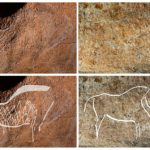 The Basque Country is known for caves containing art from prehistoric times. Researchers have found another treasure trove of prehistoric art, this time in the Atxurra cave. The paintings depict numerous animals, several being hunted. They are in excellent condition and provide new insight into the lives of the prehistoric inhabitants of the region we now call the Basque Country.
The Basque Country is known for caves containing art from prehistoric times. Researchers have found another treasure trove of prehistoric art, this time in the Atxurra cave. The paintings depict numerous animals, several being hunted. They are in excellent condition and provide new insight into the lives of the prehistoric inhabitants of the region we now call the Basque Country.
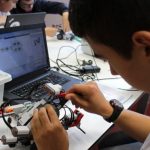 Finally, a note about education. If you count it separately from the rest of Spain, the Basque Autonomous Community (BAC) ranks third in Europe in per-pupil spending (after Denmark and Austria) and third in research and development (after Denmark and Finland) in Europe. They have made major pushes to develop themselves into an education center. This article from the BBC highlights some of the initiatives the BAC has made in education while this article from Pan European Networks summarizes the current education situation in the BAC.
Finally, a note about education. If you count it separately from the rest of Spain, the Basque Autonomous Community (BAC) ranks third in Europe in per-pupil spending (after Denmark and Austria) and third in research and development (after Denmark and Finland) in Europe. They have made major pushes to develop themselves into an education center. This article from the BBC highlights some of the initiatives the BAC has made in education while this article from Pan European Networks summarizes the current education situation in the BAC.
Discover more from Buber's Basque Page
Subscribe to get the latest posts sent to your email.

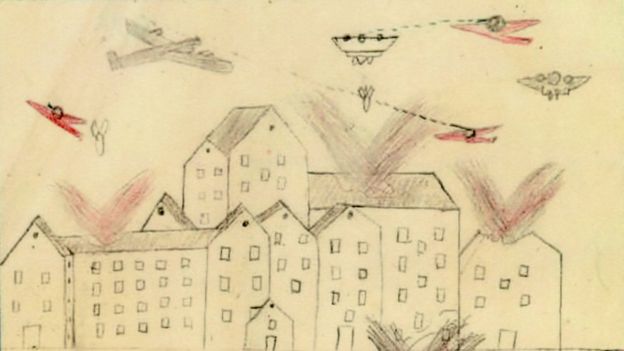

Little Basque gems! I always get so much from them. Thank you!
Refaela